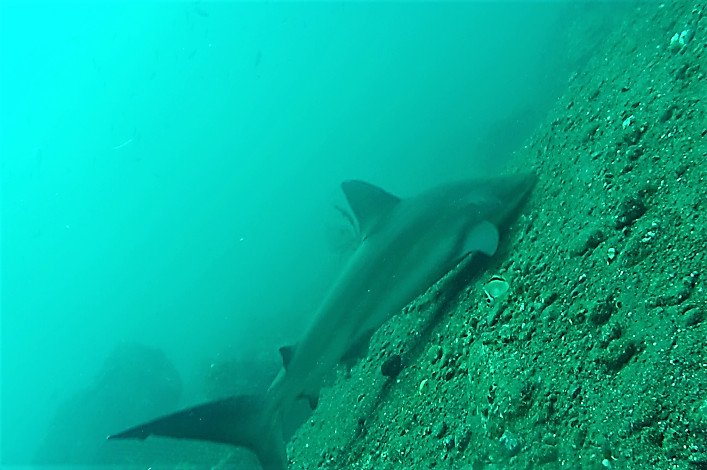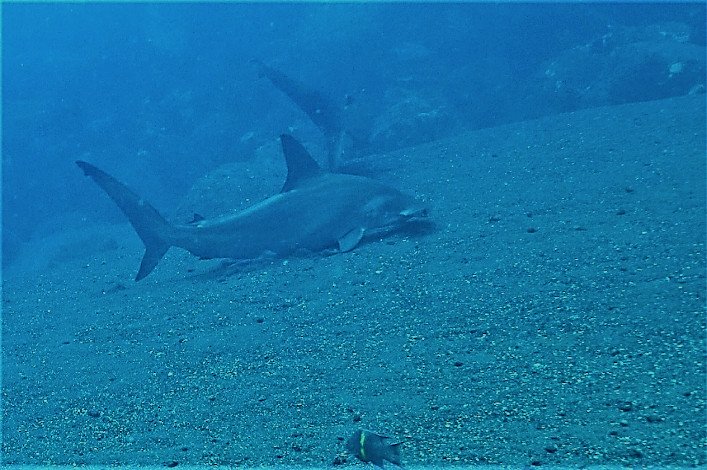The world of sharks is full of unknowns. It invites people around the world to dive into it and explore it. For those of us who allow ourselves to be seduced by this world so unfamiliar, and yet so close to us, several questions arise such as: how do sharks behave? what is their role in the oceans? what are their vulnerabilities? how do they interact with other species, and especially with humans? There are many more questions, some of which have already been answered and others are yet to be discovered. The question that is currently in my mind is about how sharks clean themselves? This is the subject of the research that I am presently carrying out within the Charles Darwin Foundation's "Shark Ecology" research project.
Early in 2022, we went on a fieldtrip to the northern and eastern islands of the Galapagos Archipelago, where we deployed underwater video cameras at several reef fish cleaning stations. When analyzing the footage, we observed the interactions where one fish cleans another individual (client-cleaner relationship), as well as an unusual behavior, where individuals of different shark and fish species scratched various sections of their bodies against a rough surface, such as rocks or sand. To my surprise, this behavior has been more common than it sounds, and is known as chafing. This behavior by elasmobranchs and other fishes has been previously reported as a cleaning strategy to remove parasites from different parts of their bodies, including the edge of the mouth, the tips of the pectoral fins, and the ventral area.

One event in particular caught our attention, when a group of scalloped hammerhead sharks (Sphyrna lewini) entered a sandy patch swimming very close to the bottom, suddenly a male shark chafed its claspers (male reproductive organs) against the sand as he continued swimming, demonstrating his agility to bend over, exposing his claspers, chafe them and continue within the group formation. This event is described in more detail in the manuscript "Chafing behavior by scalloped hammerhead sharks (Sphyrna lewini), including an unusual scratching of claspers", recently published in the journal Marine Biodiversity.

Although this event was unusual for us, it is likely that the scratching behavior of claspers is an important activity for maintaining these reproductive organs in a healthy condition for the mating events that have been confirmed to occur in the Eastern Tropical Pacific (ETP).
It is clear that in the world of sharks, there are complex interactions such as cleaning interactions, which play a key role in maintaining the health of marine organisms. They take many forms, such as client-cleaner interactions and the use of inanimate elements, such as stones or sandy patches, and certainly others that have not yet been observed. This is only the beginning in our exploration of shark cleaning behavior at the Galapagos Islands. We are sure to find more surprises to uncover as we continue fulfilling sharky dreams.







